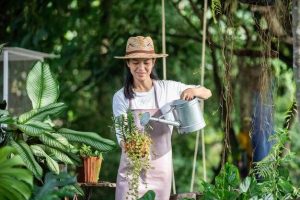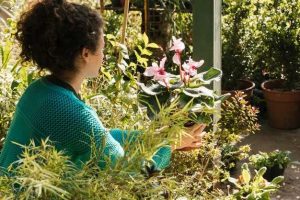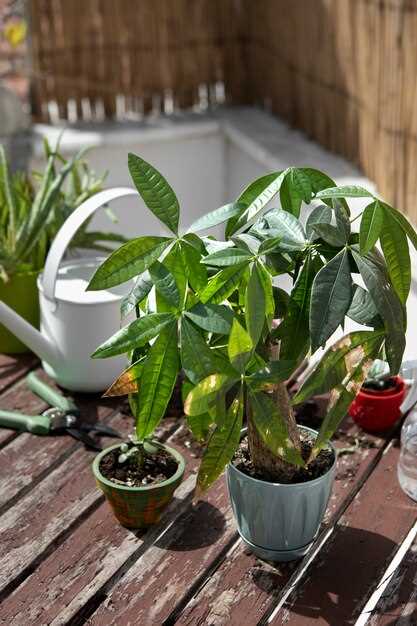
Small Garden Ideas for Nicaragua: Maximizing Your Space
Utilize vertical space by installing wall planters or trellises. This approach not only saves ground area but also enriches your garden aesthetically. Climbing plants, such as beans or flowering vines, thrive in Nicaraguan climates, adding greenery and color without occupying precious soil space.
Consider adopting container gardening as a flexible solution. Choose pots made from sustainable materials that fit your style and space. With containers, you can arrange your plants in various configurations, ensuring access to sunlight while keeping pathways clear. Herbs, tomatoes, and peppers flourish in pots, providing fresh ingredients right at your fingertips.
Create defined zones within your garden using raised beds. Constructing these beds allows for better soil management and drainage, which is beneficial in Nicaragua’s tropical weather. Use native plants in these beds, as they require less water and maintenance, enabling you to focus on enjoying your space rather than laboring over it.
Incorporate edible landscaping into your garden design. Plant fruit trees, like mango or papaya, alongside ornamental flowers. This practice maximizes utility and aesthetic appeal, allowing you to enjoy the fruits of your labor while enhancing the beauty of your surroundings.
Lastly, consider installing a rainwater collection system. This sustainable practice not only conserves water but also supports your garden during dry spells. A simple barrel connected to your roof can provide ample water to nourish your plants, making your small garden more resilient and productive in the long run.
Choosing the Right Plants for Your Climate
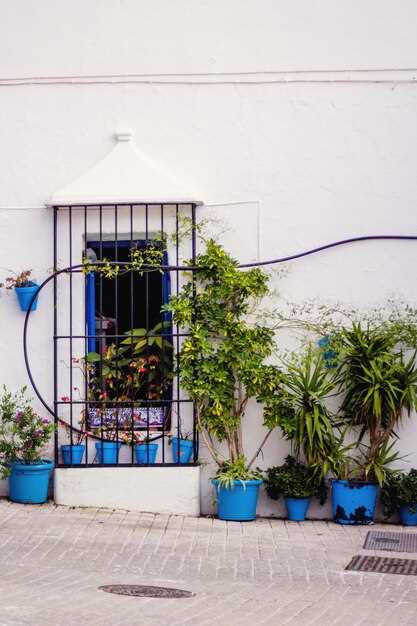
Select native plants to ensure they thrive in Nicaragua’s tropical climate. Species like the Heliconia or the vibrant Bougainvillea not only withstand heat but also attract local wildlife.
Consider drought-resistant varieties such as succulents or cacti. These plants require minimal water and can flourish in the dry season, helping you conserve resources.
For more shade, explore trees like the Jacaranda or Flamboyant. Both provide cooling canopies and stunning floral displays, making them perfect for garden aesthetics and functionality.
Herbs such as cilantro, basil, and oregano grow well in warm climates. Incorporate these into your garden for easy access to fresh ingredients and added fragrance.
Group plants with similar water and light needs together. This practice simplifies maintenance and enhances the overall health of your garden.
Timing is key. Plant during the rainy season for better establishment without the stress of irrigation. This aligns their growth cycle with the natural weather patterns.
Regularly assess your garden’s microclimates. Some areas may be more humid or shaded, allowing for a diverse range of plants to coexist harmoniously.
Explore local markets and nurseries. They often stock plants adapted to the region, offering you choices that are proven to succeed in your specific conditions.
Incorporate companion planting. Certain combinations, like tomatoes with basil, enhance growth and deter pests, leading to a healthier garden.
Lastly, enjoy the process. Experiment with various plants, observe what flourishes, and adapt your choices to create a garden that reflects your personal style while thriving in Nicaragua’s climate.
Creative Container Gardening Solutions
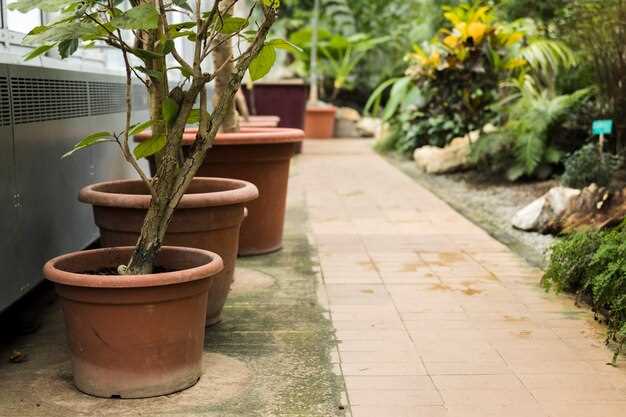
Utilize recycled materials to create unique planters. Old wooden pallets, for instance, can serve as vertical gardens. Simply stack the pallets upright, fill the gaps with soil, and plant herbs or flowers. This not only saves space but also adds character to your garden.
Try tiered containers for a space-saving solution. Stack pots of different sizes to create vertical layers. Use this method to grow strawberries, trailing plants, or cascading flowers. This approach maximizes sunlight exposure and adds visual interest.
Horizontal Gardens
Horizontal gardening makes great use of narrow spaces. Arrange a long planter box along a wall or fence. Fill it with a mix of edible plants like chives, basil, and mint. This design not only enhances accessibility but also creates a stunning display.
Hanging Gardens
Consider hanging planters to save ground space. Use sturdy hooks to suspend pots from ceilings, balconies, or railings. Ideal for herbs like thyme, oregano, or cascading vines, this method brings greenery to even the smallest areas.
Vertical shoe organizers work well for small plants. Hang one on a wall, fill each pocket with soil, and plant herbs or succulents. This is an excellent way to add greenery without requiring floor space.
Integrate drip irrigation in your container gardens. This system conserves water and ensures even moisture for your plants, especially in Nicaragua’s climate. Set it up with minimal effort using simple tubing and a timer to support your gardening needs.
Utilizing Vertical Space in Balcony Gardens
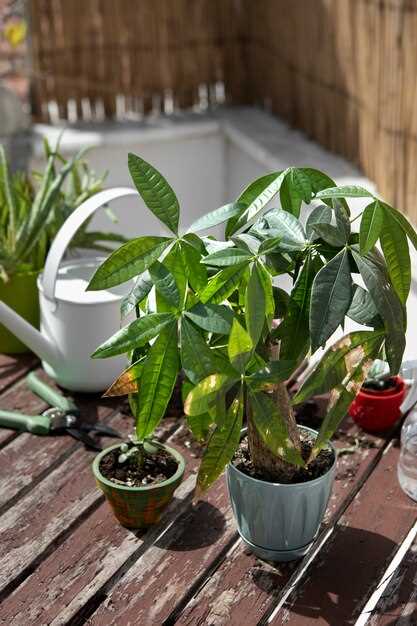
Maximize your balcony garden by incorporating vertical gardening techniques. This approach allows you to grow more plants without sacrificing precious floor space.
Choose the Right Structures
- Wall Planters: Install wall-mounted planters or shelves to create a green wall. This setup not only saves space but also adds a decorative element to your balcony.
- Vertical Stands: Use tiered plant stands to display multiple pots. These stands come in various styles, offering both functionality and aesthetic appeal.
- Hanging Baskets: Hang baskets from railings or overhead structures. Ideal for cascading plants like petunias or strawberries.
Incorporate Climbing Plants
- Trellises: Install trellises against walls for plants such as beans or climbing roses. This encourages upward growth and maximizes sunlight exposure.
- Vertical Mesh: Use mesh or netting to support trailing plants. This can enhance air circulation while keeping your balcony tidy.
- Repurposed Ladders: Use an old ladder as a unique plant display. Position pots on each rung for a rustic look.
By utilizing these vertical gardening strategies, you can create a lush and productive balcony garden, offering fresh herbs and vibrant flowers while making the most of limited space.
Designing a Small Garden for Maximum Productivity
Utilize vertical space by installing shelves or using trellises to grow climbing plants such as beans, peas, or cucumbers. This method not only saves ground area but also increases sunlight exposure for your crops.
Incorporate raised beds to improve drainage and soil quality. Choose materials that withstand Nicaragua’s climate, like treated wood or metal. Arrange the beds to create pathways for easy access while maintaining compactness.
Select high-yield, fast-growing crops suitable for local conditions. Consider planting herbs like basil and cilantro, which can be harvested multiple times, or leafy greens that grow quickly and can be replanted throughout the season.
Implement companion planting to maximize space and improve plant health. Pair plants that can benefit from each other; for example, tomatoes thrive when planted near basil, while marigolds can deter pests from vegetables.
Incorporate container gardening for flexibility. Use pots to grow vegetables or herbs that can be moved to catch optimal sunlight. Choose lightweight materials for ease of movement, and select varieties that suit small spaces, such as dwarf tomatoes or chili plants.
Utilize ground cover plants, like strawberries or creeping thyme, to reduce weeds and provide edible ground. This approach makes the most of the garden area while offering a unique harvest.
Rotate crops yearly to maintain soil health and reduce pest buildup. Planning a seasonal rotation can help keep your garden productive and robust throughout the year.
Monitor your garden’s exposure to sunlight and wind patterns to position plants accordingly. Group sun-loving plants together and protect more delicate varieties from harsh winds to ensure they thrive.
Lastly, consider using hydroponics or aquaponics if space allows. These systems can yield higher productivity in smaller areas by using specialized growth methods that require less land and water compared to traditional gardening.
Incorporating Edible Plants into Your Garden Design
Choose a variety of edible plants that flourish in Nicaragua’s climate to create a productive and visually appealing garden. Start with herbs like basil, cilantro, and oregano, which grow well in small spaces and add flavor to dishes.
- Containers: Use pots or vertical planters for herbs, maximizing your area while keeping them accessible.
- Companion Planting: Combine tomatoes with marigolds to deter pests naturally. This approach can boost both yield and aesthetics.
Incorporate fruit-bearing plants, such as strawberries and dwarf citrus trees, which can thrive in limited spaces. Strawberries can be grown in hanging baskets, adding beauty and providing a delicious harvest. Dwarf citrus offers a fragrant touch and edible fruits.
- Spacing: Ensure adequate spacing for air circulation and sunlight access when planting in a garden bed.
- Pollinators: Attract bees by including flowering plants like borage or lavender, which support fruit and vegetable production.
Don’t overlook leafy greens such as kale, spinach, and Swiss chard. These can be planted densely, allowing for multiple harvests throughout the seasons. Use row covers to extend your growing season and shield crops from harsh conditions.
- Plant tall crops like tomatoes at the back of the garden bed, while shorter crops, such as lettuce, go in front.
- Rotate crops each season to maintain soil health and prevent pests.
Implement a drip irrigation system to ensure efficient water use, keeping plants healthy and minimizing excess runoff. This also helps busy gardeners maintain their edible plants without constant supervision.
Combine aesthetics with functionality by creating themed edible gardens, like a salsa garden featuring tomatoes, peppers, and cilantro. This approach not only looks lovely but also provides all the ingredients for a fresh salsa.
Maximizing Sunlight Exposure in Small Spaces
Position your plants to receive maximum sunlight by utilizing vertical gardening techniques. Wall planters or tiered shelving can significantly increase the amount of sunlight each plant absorbs without requiring extensive ground space. Choose locations that receive direct sunlight, especially in the afternoon when sunlight is most intense.
Consider the specific needs of each plant. Some thrive in full sun, while others prefer partial shade. Use a table to help you plan the arrangement based on light requirements:
| Plant Type | Light Requirement | Recommended Placement |
|---|---|---|
| Tomatoes | Full Sun | South Wall |
| Basil | Full Sun | Raised Bed, Sunny Corner |
| Mint | Partial Shade | Underneath Taller Plants |
| Leafy Greens | Partial Shade | Near Structures for Afternoon Shade |
Use reflective surfaces like mirrors or white walls to bounce sunlight into darker areas. This technique increases light availability without needing more space. If possible, prune larger plants to prevent them from overshadowing smaller ones, ensuring that all your plants receive adequate light.
When selecting containers, opt for those made of lighter materials to absorb and retain heat. This helps create a microclimate favorable for growth. Be mindful that some containers may become too hot; choose wisely to protect your plants.
Incorporate movable planters. This flexibility allows you to adapt to changing sun patterns throughout the seasons. Regularly monitor and adjust the position of your containers to optimize sunlight exposure.
Wind and Rain Considerations for Small Gardens in Nicaragua
Choose sturdy plants that can withstand strong winds and heavy rains. Varieties like indigo (Indigofera suffruticosa) and various tropical shrubs are resilient. They require minimal support during storms and offer natural beauty throughout the year.
Creating Windbreaks
Install windbreaks using taller plants or trellises with climbing vines. This technique protects smaller, delicate plants from harsh winds. Bamboo can serve as a natural barrier while providing an attractive touch to your garden. Consider positioning your windbreaks strategically to maximize their effectiveness.
Water Management Strategies
Use planters with excellent drainage to prevent waterlogging after heavy rains. Adding gravel or stones at the bottom of pots helps enhance drainage. Ensure that your garden layout promotes proper runoff, directing excess water away from plant roots.
Mulching also aids in water retention during dry spells while stabilizing soil moisture levels during periods of heavy rain. Choose organic mulch, such as shredded bark or straw, to support soil health.
Implementing these methods ensures your small garden thrives amid Nicaragua’s windy and rainy conditions. Prioritize resilience to enjoy a flourishing outdoor space all year long.
Maintenance Tips for Small Gardens and Container Plants
Water your plants regularly, observing for signs of moisture in the soil. Container plants often dry out faster than garden beds. Ensure pots have drainage holes to prevent water accumulation.
Fertilize every month during the growing season. A balanced liquid fertilizer works well for most container plants. Mix according to package instructions to avoid damaging roots.
Prune your plants to encourage bushier growth and remove dead or wilted leaves. Use sharp, clean tools for precise cuts, fostering better healing and reducing the risk of disease.
Rotate your containers periodically to ensure all sides of the plants receive equal sunlight. This helps maintain symmetry and can prevent leaning or uneven growth.
Monitor for pests such as aphids or spider mites. Use insecticidal soap or neem oil for treatment. Apply in the early morning or late afternoon to minimize harm to beneficial insects.
Consider companion planting in your small garden. Group plants with compatible needs to promote healthy growth and reduce pest issues. For example, herbs can deter insects while providing aromas and flavors.
Keep an eye on the local weather. Provide shade during extreme heat and protection during unexpected cold snaps. Use row covers or shade cloths to shield sensitive plants.
Regularly clean your garden tools to prevent disease transmission. Store them in a dry, clean place to ensure longevity and readiness for use.
Take advantage of vertical space. Utilize wall planters or hanging baskets to create layers, enhancing both visual appeal and variety. Mix trailing and upright plants for a dynamic display.
Video:
7 design ideas for a small garden | The RHS
7 design ideas for a small garden | The RHS by RHS – Royal Horticultural Society 8,440 views 1 year ago 7 minutes, 20 seconds
Q&A:
What are some space-saving planting techniques for small gardens in Nicaragua?
In Nicaragua, small garden spaces can benefit from vertical gardening techniques. By using trellises, you can train climbing plants like tomatoes and beans to grow upwards, freeing up ground space. Hanging planters can also be utilized to create a beautiful display while maximizing the area. Additionally, grouping plants with similar water and sunlight needs can optimize your garden’s layout, enabling you to fit more into a limited space while ensuring healthy growth.
Which types of plants grow well in the Nicaraguan climate for small gardens?
Given Nicaragua’s tropical climate, it is ideal to plant heat-tolerant varieties such as herbs like basil, cilantro, and oregano, as well as vegetables like peppers, eggplants, and cucumbers. These plants thrive in warm temperatures and can be grown in compact spaces. Additionally, incorporating native flowers like marigolds and zinnias can attract beneficial pollinators while enhancing the aesthetic appeal of your garden.
Can you suggest some decorative elements to enhance a small garden in Nicaragua?
To elevate the aesthetic of a small garden, consider adding decorative stones or pebbles as ground cover, which can prevent weeds and add texture. Small sculptures, birdbaths, or colorful pots can serve as focal points. String lights or lanterns can provide evening ambiance, making the garden a pleasant retreat. Using recycled materials like wooden pallets for furniture or planters can also introduce a rustic charm while being eco-friendly.
How can I incorporate sustainability into my small garden planning in Nicaragua?
Sustainability can be integrated into small garden practices by using composting bins to recycle kitchen waste as fertilizer. Rainwater collection systems can help irrigate plants without wasting water. Opting for organic seeds and avoiding chemical pesticides can promote a healthier garden ecosystem. Additionally, planting native species can reduce water usage and attract local wildlife, contributing to a more sustainable environment.
What are some ideas for using small garden spaces for growing food in Nicaragua?
For food cultivation in compact areas, consider implementing companion planting, where different crops are grown together for mutual benefits, such as planting basil with tomatoes. Container gardening allows you to grow food in pots, making it easy to manage and relocate if necessary. Using raised beds can also optimize space while improving soil quality. Succession planting, where new crops are sown as soon as a previous crop is harvested, maximizes productivity in a limited area.

